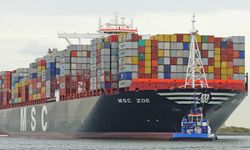The Japanese-owned vessel, built in 2008, was en route from Malaga, Spain, to Dar es Salaam, Tanzania, when it encountered the storm while rounding the Cape of Good Hope.
The FV Malachite successfully rescued the crew and transported them to St. Helena Bay. The South African Maritime Safety Authority (SAMSA) dispatched two rescue tugs to the area, expected to arrive later on Tuesday, July 9, to attempt to tow the vessel. SAMSA reported that the nature of the cargo was unknown and it was unclear whether the vessel remained afloat.
On Sunday, July 7, Cape Town and the Western Cape region were struck by a fierce winter storm, with the weather service warning of a series of cold fronts moving across the region. The storm brought heavy winds, rain, and snow to parts of the country, causing downed trees, flooding, and power outages. Approximately 4,000 people were reported homeless in the Cape Town region, with residents being warned to prepare for additional storms.
Shipping industry observers expressed concerns about the conditions ships would face during the peak of the winter season in South Africa. With most shipping diverting from the Red Sea, vessels are exposed to harsh winter conditions while navigating the Cape of Good Hope. Many of these diverted ships are also seeking to bunker in South Africa.
On Monday, Maersk issued an extreme weather warning for the South African coast, highlighting that vessels might need to seek shelter or alter their courses to avoid the severe weather. The worst impact was expected near Port Elizabeth in the Eastern Cape region, with forecasts predicting strong winds, high waves, and heavy rain over the next few days, particularly between Cape Town and Port Elizabeth, which would affect vessel movement and operations.







